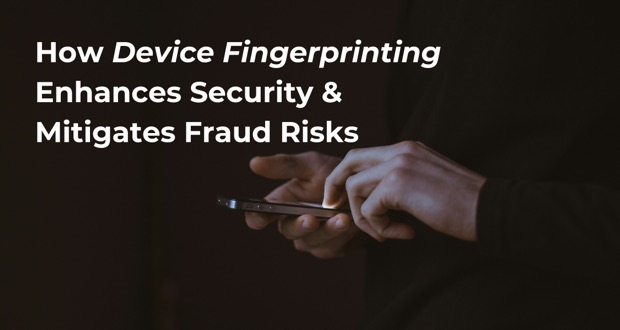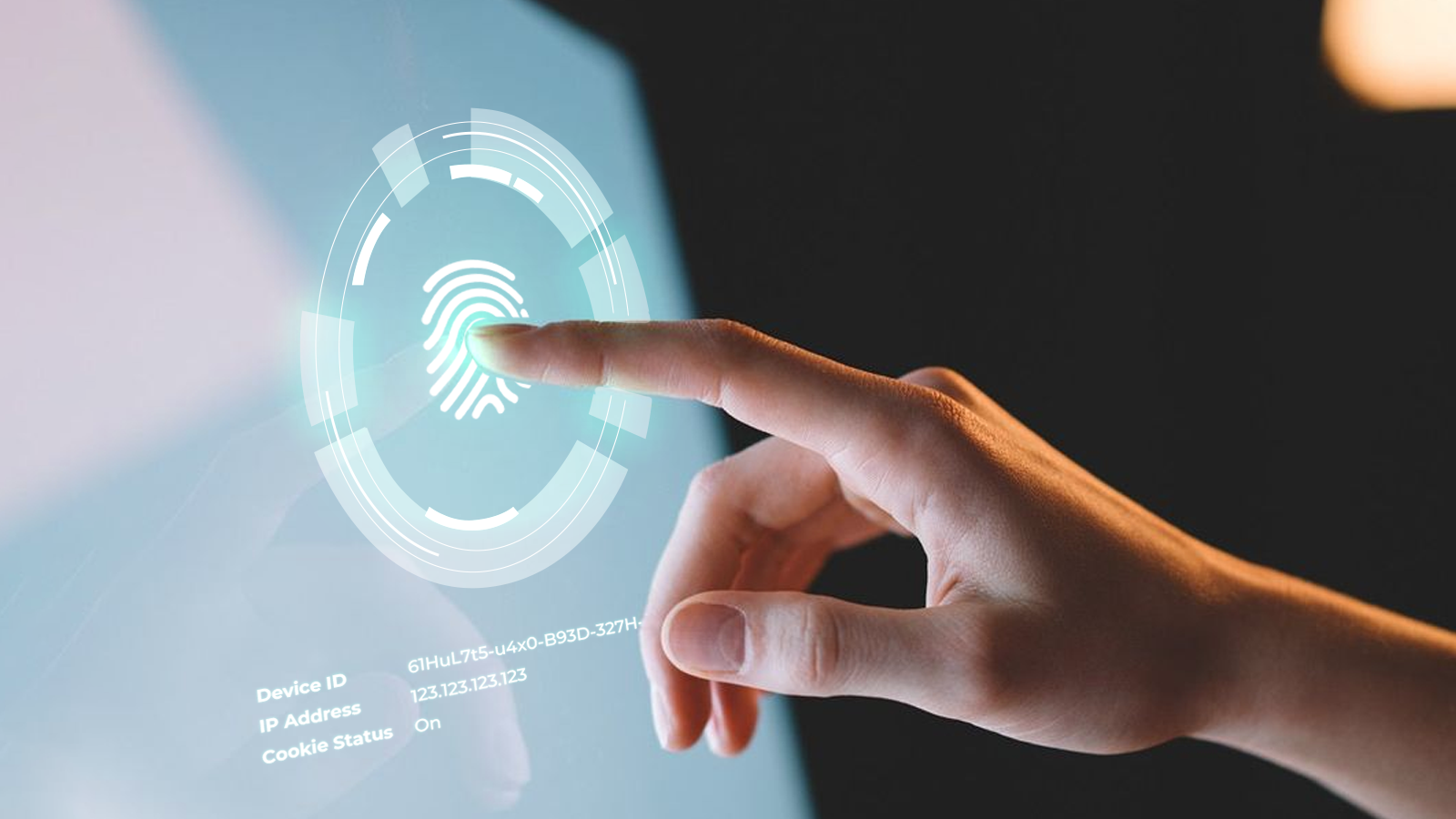Introduction
Definition of Device Fingerprinting
Device fingerprinting is a sophisticated technique used to uniquely identify and track devices (such as smartphones, tablets, and computers) based on their inherent characteristics. Unlike traditional identifiers like cookies, which can be easily deleted or manipulated, device fingerprints are more resilient and persistent. They rely on a combination of hardware, software, and behavioral attributes to create a digital signature for each device.
Importance in Risk Management
As we explore device fingerprinting, it becomes evident that this technology plays a pivotal role in bolstering security across digital channels. By recognizing legitimate devices and detecting anomalies, organizations can prevent unauthorized access, data breaches, and fraudulent activities.
The Role of Device Fingerprinting in Risk Management
Understanding Device Fingerprinting
Device fingerprinting operates by collecting a wide range of attributes from a user’s device. These attributes include:
- Hardware Characteristics: Details about the device itself, such as its operating system, browser, screen resolution, and installed fonts.
- Software Configuration: Information related to plugins, extensions, and other software components.
- Behavioral Patterns: How users interact with their devices, including typing speed, mouse movements, and touch gestures.
The combination of these attributes creates a unique fingerprint for each device. Unlike cookies, which are stored on the user’s device, device fingerprints are generated server-side, making them more resilient to user manipulation.
Risk Landscape
In today's digital landscape, businesses face an ever-evolving array of risks. Fraud is a significant concern, as cybercriminals constantly devise new methods to exploit vulnerabilities. Device fingerprinting helps detect suspicious behavior and prevents unauthorized access, thereby mitigating the risk of fraud. Data breaches are another critical issue, as protecting sensitive data is paramount. Device fingerprints aid in identifying compromised devices and securing access points, enhancing data protection. Account takeovers are a common tactic used by fraudsters to target user accounts. By recognizing legitimate devices, organizations can prevent unauthorized logins and protect user accounts. Identity theft is another risk that device fingerprinting helps mitigate by contributing to the verification of user identities, reducing the risk of impersonation.
Device Fingerprinting as a Risk Mitigation Strategy
Device fingerprinting serves as a powerful risk mitigation tool in several ways. It can be used for authentication, where organizations combine device fingerprints with traditional authentication methods, such as passwords, to enhance security. This multifactor authentication approach ensures that access is granted only when both the user's credentials and device fingerprint match. Anomaly detection is another critical application of device fingerprinting. Deviations from established device patterns trigger alerts, prompting additional verification steps if a user suddenly logs in from an unrecognized device. Continuous monitoring is also facilitated by device fingerprints, allowing for ongoing observation of user behavior. Any changes or anomalies can be investigated promptly, ensuring that potential risks are addressed in real-time.
Industry Trends
Device fingerprinting is gaining traction across various industries due to its effectiveness in enhancing security and improving user experiences. Here are some key sectors where device fingerprinting is making a significant impact:
- Banking and Finance: Financial institutions are increasingly adopting device fingerprinting to bolster security during online banking, fund transfers, and account management. By identifying and verifying devices, banks can prevent unauthorized access and reduce the risk of fraud. This technology also helps in detecting unusual transaction patterns, enabling timely intervention to protect customer accounts.
- Healthcare: Hospitals and healthcare providers use device fingerprints to secure patient portals, ensuring that sensitive medical information remains confidential. By verifying the devices accessing patient records, healthcare organizations can prevent unauthorized access and maintain compliance with regulations such as HIPAA. This added layer of security is crucial for protecting patient privacy and maintaining trust.
- Retail and E-Commerce: Retailers leverage device fingerprinting technology to prevent fraudulent orders, protect customer data, and optimize user experiences. By identifying legitimate devices, retailers can reduce the risk of chargebacks and account takeovers. Additionally, device fingerprinting helps in personalizing the shopping experience by recognizing returning customers and tailoring recommendations based on their previous interactions.
- Travel and Hospitality: Airlines and hotels use device fingerprints for secure bookings and loyalty program management. By verifying the devices used for reservations and loyalty account access, these businesses can prevent unauthorized bookings and protect customer data. This technology also enhances the user experience by streamlining the booking process and ensuring that loyalty rewards are accurately tracked and redeemed.
TrustDecision’s Device Fingerprint Solution
Overview
TrustDecision is a leading provider of risk management solutions, specializing in safeguarding digital interactions. With years of expertise, we empower organizations to mitigate risks, enhance security, and protect their valuable assets. Our comprehensive approach to risk management ensures that businesses can operate confidently in an increasingly complex digital landscape.
Device Fingerprint Solution
Our device fingerprinting solution is designed to address the unique challenges faced by businesses in today's dynamic environment. TrustDecision’s device fingerprinting solution aims to create a robust and accurate profile for each user's device, enabling seamless authentication and proactive risk management. The benefits of our solution are manifold:
- Enhanced Security: By analyzing behavioral patterns and hardware attributes, our solution identifies legitimate devices and detects anomalies, thereby enhancing overall security.
- Fraud Prevention: Real-time monitoring helps prevent fraudulent activities, account takeovers, and unauthorized access, ensuring that your business remains protected.
- User Experience Optimization: Balancing security with a smooth user experience is at the core of our solution, ensuring that users can interact with your platform seamlessly while maintaining high security standards.
Key Features
1. Behavioral Biometrics
TrustDecision captures unique behavioral patterns to create accurate device fingerprints. These patterns include keystrokes, mouse movements, typing speed, and touch gestures. By analyzing these subtle cues, we build a reliable profile for each device.
2. Cross-Channel Tracking
Our solution seamlessly tracks user behavior across different channels—whether it’s web browsing, mobile apps, or other touchpoints. This cross-channel visibility enhances security by identifying consistent user patterns and detecting anomalies.
3. Machine Learning Algorithms
We leverage advanced machine learning algorithms to detect deviations from established device profiles. Whether it’s an unusual login location or unexpected behavior, our algorithms raise alerts, allowing timely intervention.
Future Outlook
As device fingerprinting continues to evolve, its applications are expected to expand across more industries. The integration of artificial intelligence and machine learning will further enhance the accuracy and effectiveness of device fingerprinting solutions. Businesses that adopt this technology will be better equipped to manage risks, protect customer data, and deliver seamless user experiences.
In conclusion, device fingerprinting is a powerful tool for risk management that is gaining widespread adoption across various industries. By leveraging this technology, businesses can enhance security, prevent fraud, and optimize user experiences. TrustDecision's device fingerprinting solution offers a comprehensive approach to risk management, empowering organizations to navigate the complexities of the digital landscape with confidence. As the digital world continues to evolve, staying ahead of industry trends and adopting innovative solutions like device fingerprinting will be crucial for maintaining a competitive edge and ensuring long-term success.
Conclusion
In the ever-evolving landscape of digital security, finding the delicate balance between robust protection and user experience is paramount. Device fingerprinting emerges as a powerful ally in achieving this equilibrium.
Balancing Security and User Experience
Decision makers must recognize that security measures should not hinder user interactions. Device fingerprinting, with its ability to seamlessly verify legitimate devices, ensures a frictionless experience for users while maintaining a strong security posture.
As you steer your organization toward safer digital waters, consider exploring device fingerprinting as part of your risk management strategy. TrustDecision’s solution offers a comprehensive approach, combining behavioral biometrics, cross-channel tracking, and machine learning algorithms. Take the next step toward a secure and user-friendly future.






.jpeg)
.jpeg)
.jpeg)





